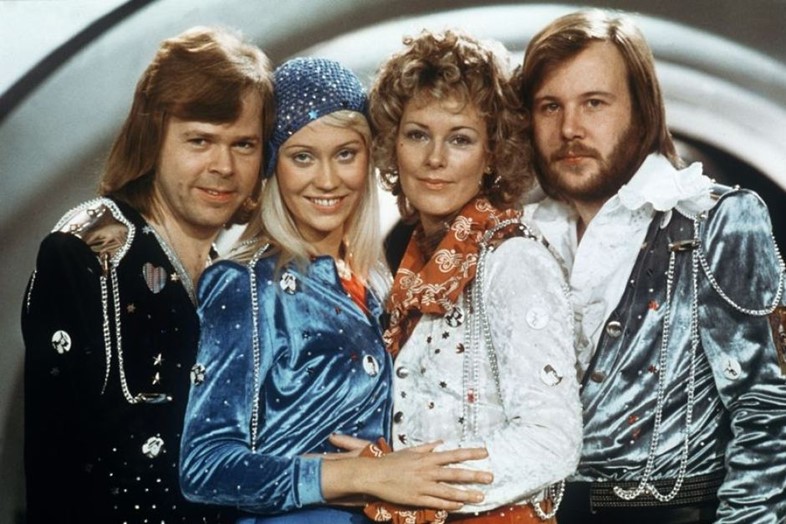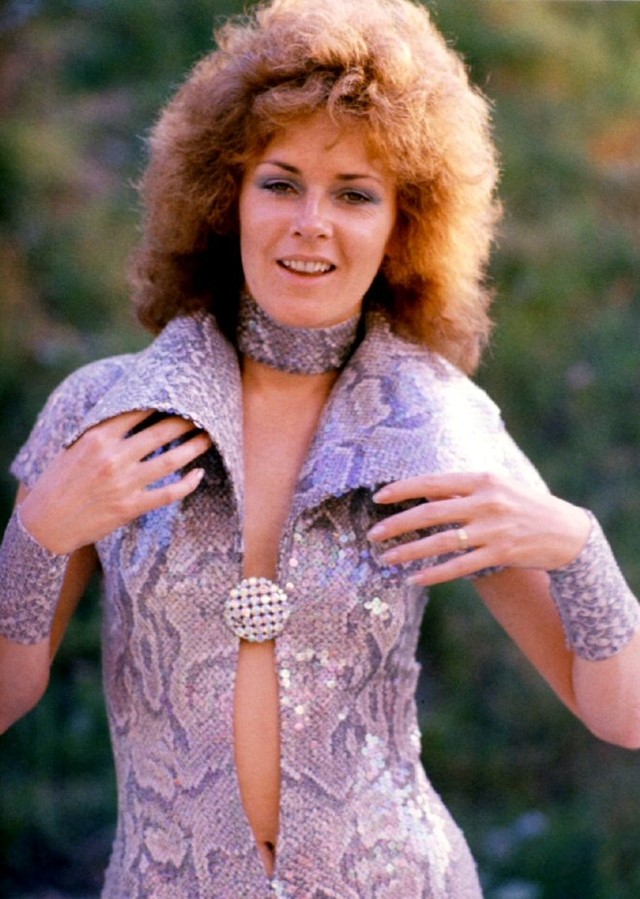Looking back at Anni-Frid Lyngstad's journey from glittering spandex to Swiss royalty
Anni-Frid Lyngstad has lived something close to a modern day fairy tale. Orphan-turned-Scandi-pop star-turned-Princess, the famous Swede stands as a landmark in pop culture for her part in 1970s rhinestone-studded pop sensation ABBA. This month marks the 40th anniversary of Waterloo, the first single to propel the group to fame during the 1974 Eurovision Song Contest.
"She wore tiered bell-bottom flares, fur coats, satin jumpsuits and silver platform boots"
ABBA were a far cry from the Scandi-cool that fashion is currently buying into. Anni-Frid and her then-husband Benny Andersson rocked in unison throughout the 1970s in matching tiered bell-bottom flares, fur coats, satin jumpsuits and silver platform boots, along with fellow members Björn Ulvaeus and Agnetha Fältskog. Costume designer Owe Sandström was responsible for many of their glittering spandex costumes and crochet skull caps, which he designed with his partner Lars Wigenius. These items now live on in the ABBA museum in Stockholm: a dazzling shrine to the Swedish foursome. It was been admitted in recent years that their costumes were often a ploy to avoid tax, taking advantage of a Swedish law in which it states clothing can be tax-deductible if the owners can prove they are not daily wear.

In 1992 Lyngstad swapped sequins for diamonds and married Prince Heinrich Ruzzo Reuss, Count of Plauen, a Swedish-Swiss landscape architect and prince of the former sovereign House of Reuss. They lived together in his castle in Switzerland, however her marriage was short-lived when Reuss tragically died of lymphoma, a year after Lyngstad's daughter Lise-Lotte was killed in a car accident. After these tragedies, Lyngstad withdrew from the public eye in a dark period of mourning.
However like in all good fairy tales, Lyngstad has found a happy ending. She now lives in Switzerland with her boyfriend, Viscount Henry Smith, heir to W.H. Smith. Her attire is now more regal than disco and she is almost unrecognisable from her youth, dressing in stately gowns and majestic suiting. “I like to think of myself as being fashion-conscious,” she once said, “without being a slave to fashion.”
Text by Mhairi Graham






